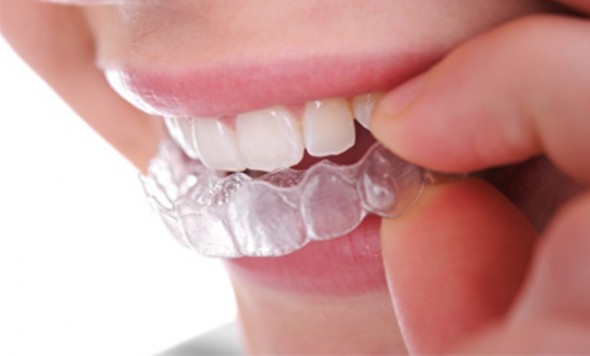More than 1 million people in the U.S. and Canada have gotten braces as adults, and not just for cosmetic reasons: “Some serious oral health concerns that come with age often require braces,” says Dr. Robert Bray, president of the American Association of Orthodontists (AAO). He explains that, as you get older, your teeth shift and become crowded. This makes it uncomfortable to chew and difficult to floss. And if you neglect your oral care, you leave yourself open to tooth decay and gum disease.
Luckily, today’s braces are more tailored to adults. They’re faster-acting and more discreet, and various options are available to match your preferences. Here’s what to consider when choosing the right braces.
If You’re on a Budget: Metal Braces
Metal brackets are bonded to each tooth and connected with spring wires and rubber bands. Thanks to advances in technology, today’s metal braces use your body heat to help them apply constant pressure, making straightening faster. What’s more, “they’re much smaller than they were in decades past, so they’re not as noticeable,” says Dr. Raymond George, past president of the AAO.
- The Downside: You need to brush after every meal to prevent food from getting stuck in crevices and damaging the tooth enamel; flossing can take about 20 minutes.
- Cost : $3,500-$6,000
For a More Subtle Smile-fixer: Ceramic Braces
These work like metal braces but are less noticeable thanks to their clear ceramic material. The brackets resist stains well, and even the wires can be made of stainless steel or coated with Teflon for greater invisibility.
- The Downside: “The tiny rubber bands that hold the wire to the brackets can stain and have to be changed at some point,” says Bray. Ceramics also require the same brushing and flossing routine as metal braces do, and they can take longer to get used to because each bracket is bulkier.
- Cost: $4,000-$6,500
If You Want to Keep Your Braces a Secret: Lingual Braces
Lingual braces are metal braces that attach to the tongue side of your teeth so no one can see them.
- The Downside: They’re trickier to install — thus making them more expensive — because the backsides of your teeth are less even than the front, so each bracket has to be customized. “They’re also harder to clean and more difficult for the dentist to make adjustments. The office visits are longer, and you need more visits,” says George. Plus, they may feel uncomfortable at first until your tongue adjusts to the change, says Bray.
- Cost: $8,000-$10,000
If Your Teeth Aren’t Extremely Crooked: Invisible Braces
This system of clear aligners uses a sheer mouth guard–like device that fits over your teeth and subtly pushes them in the right direction. The guard is thin and almost invisible.
- The Downside: You get a series of aligners, which you have to change every couple of weeks as your teeth move. You also “have to take it out to eat and brush your teeth, and put it back in again,” says George.
- Cost: $3,500-$6,000
Most of the time, you must pay in full for orthodontics, but some insurance plans cover the cost of braces, so be sure to check with your insurance company before you start. And no matter which route you take, be sure to choose an orthodontist who has worked with adults too — not just kids.
About Author: Laurie Tarkan for Completely You. What should you look for in a toothbrush? Check Choosing a Good Toothrbrush 101, a free guide from our sponsor specializes in health reporting and is a frequent contributor to The New York Times and national magazines such as Prevention, Health, Family Circle and Fit Pregnancy. She is a frequent contributor to Oral Care and Health Daily.


















There are many benefits in investing in a healthier, straighter smile. Uneven teeth will affect the ability to bite, chew and speak properly and unhealthy gums and teeth usually go hand in hand with teeth that aren’t straight. Have a look at our website for more details on adult braces.
Thanks so much for visiting the site Cindy. Great website! Wish you were in the Mobile, AL area.